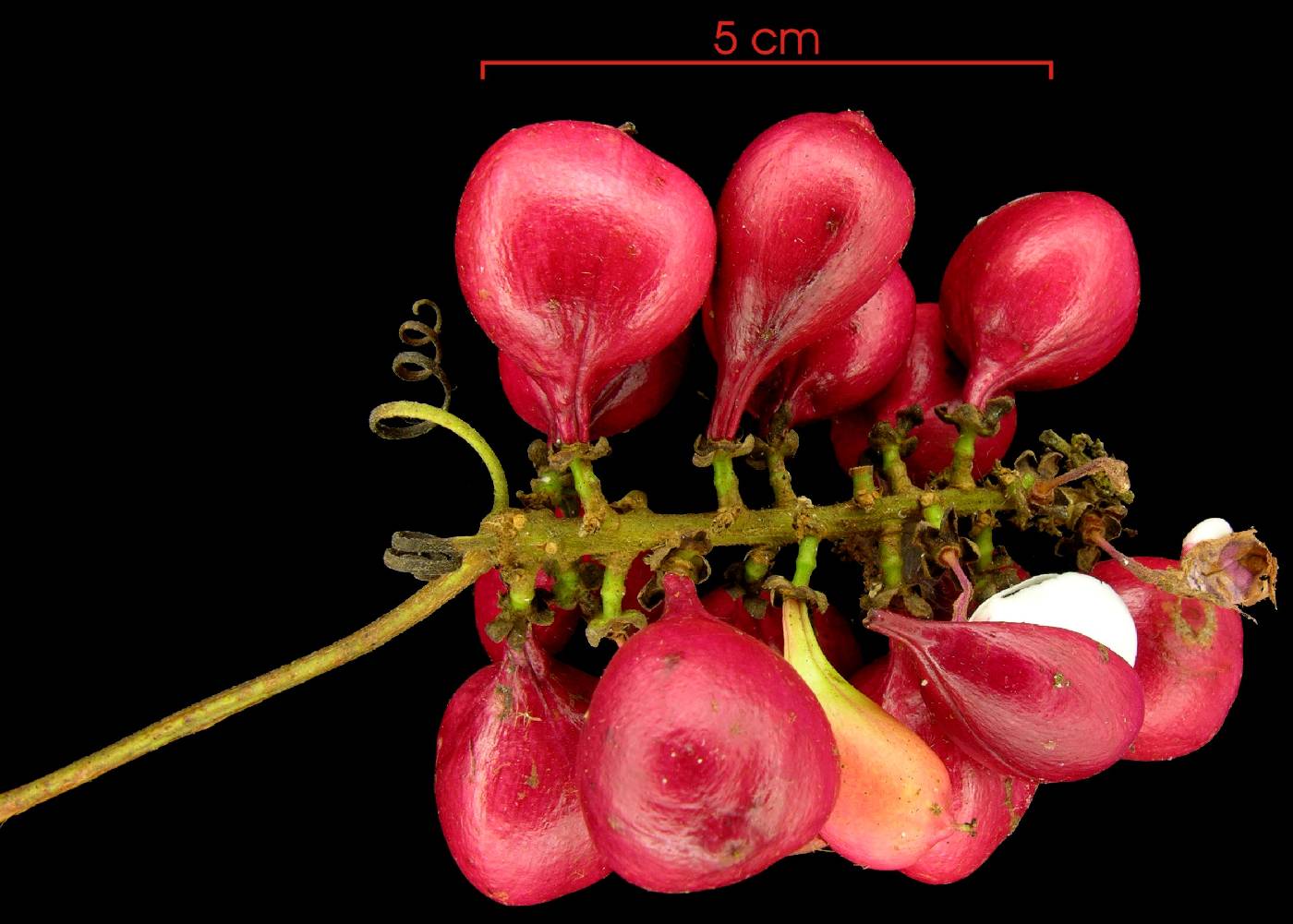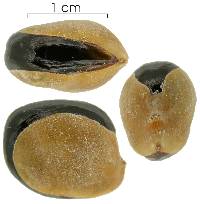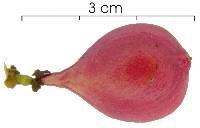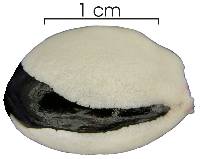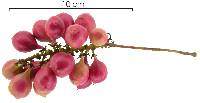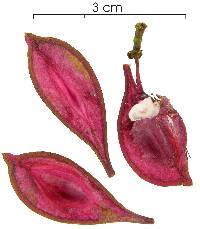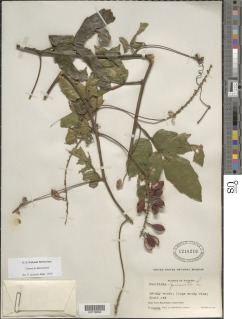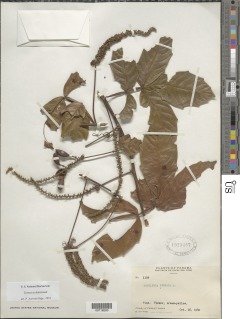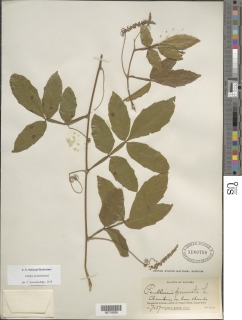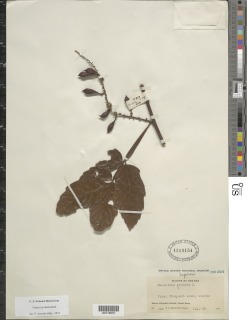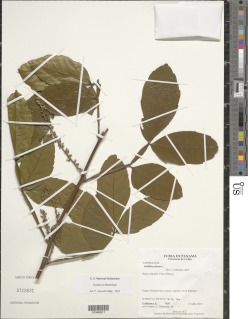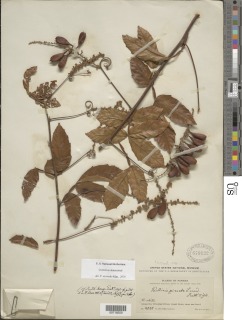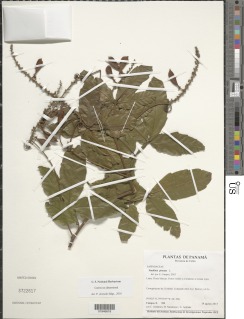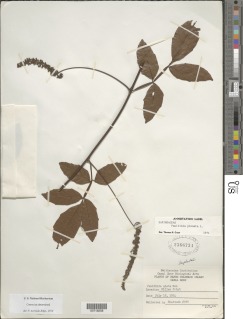

|
|
|
|
Family: Sapindaceae
Bread-and-Cheese, more... (es: Barbasco)
|
Descripción: Plantas trepadoras o lianas con el tronco triangular o hexagonal. Ramitas ligeramente cuadrangulares y con savia lechosa, también con zarcillos saliendo de los nudos. Hojas imparipinnadas y alternas, con 5 folíolos, opuestos. Los folíolos de 3-14 x 2-6 cm, oblongos o lanceolados, con ápice obtuso o acuminado, bordes dentados o crenados y base aguda. Los dientes de los bordes son glandulares. Los folíolos son coriáceos y de color verde lustroso, con pelos escasos, principalmente en las nervaduras. Estípulas de 1 cm de largo y de 0.2-0.3 cm de ancho, deciduas. Pecíolo y raquis alados. Inflorescencias axilares. Flores blancas. Frutos en cápsulas, de 2-4 x 1-1.5 cm, verdes, tornándose rojos al madurar. Semillas envueltas en la base por un arilo blanco. Especies Parecidas: A menudo se confunde con LK paulfi Paullinia fibrigera LK2 , pero en P. fibrigera los folíolos tienen los bordes enteros o levemente dentados. También se puede confundir con LK paulbr Paullinia bracteosa LK2 , pero en P. bracteosa las estípulas son de mayor tamaño. Liana; older stems 3-ribbed, the younger ones mostly 6-ribbed, glabrous to puberulent; tendrils forked. Leaves pinnate, strigillose on upper sides of petioles, rachises, and midribs; stipules lanceolate-sericeous,18 mm long, deciduous; petioles to 8 cm long; petiole and rachis winged, ciliate; leaflets 5, +/- elliptic, short-acuminate, obtuse at base, 5-11 cm long, 2.5-4.5 cm wide, bearing granular punctations on both surfaces and tufted axils below, remotely crenate. Thyrses solitary, 5-25 cm long, axillary or borne at fork of tendrils, spikelike; flowers white or yellowish, ca 3 mm wide, wider than long; sepals 5, +/- equal, tomentulose; petals 4, each fused with the scales to form single, broadly clavate structures, these structures densely villous, ca 1.5 mm long with a pocket at the apex, regular, alternating with sepals; stamens 8, exserted, ca 2.5 mm long; filaments flattened, villous below middle; pistil short; staminate flowers with the styles not obvious. Capsules broadly clavate, 2-4 cm long, rounded to truncate and abruptly acuminate at apex, gradually tapered to long-stipitate base, red, round to bluntly 3-sided in cross section; seeds 1-3, ellipsoid, 1.5-3 cm long, black, shiny, partly enclosed by a white aril. Croat 11111, 12845. Uncommon; seldom seen now, though many older collections exist. Flowers principally in the middle of the rainy season (June to August). The fruits mature in the early dry season (December to February). Rarely flowers in the dry season, with the fruits maturing in the middle of the rainy season. Throughout tropical America and in tropical central Africa. In Panama, known from tropical moist forest in the Canal Zone, Bocas del Toro, San Blas, Panama, and Darien and from premontane wet forest in Panama (Cerro Azul). See Fig. 344. |

